The Temptation of Saint Reborlaro
Living Arts, 2018, Tulsa, Oklahoma
Photo Credit: Destiny Green
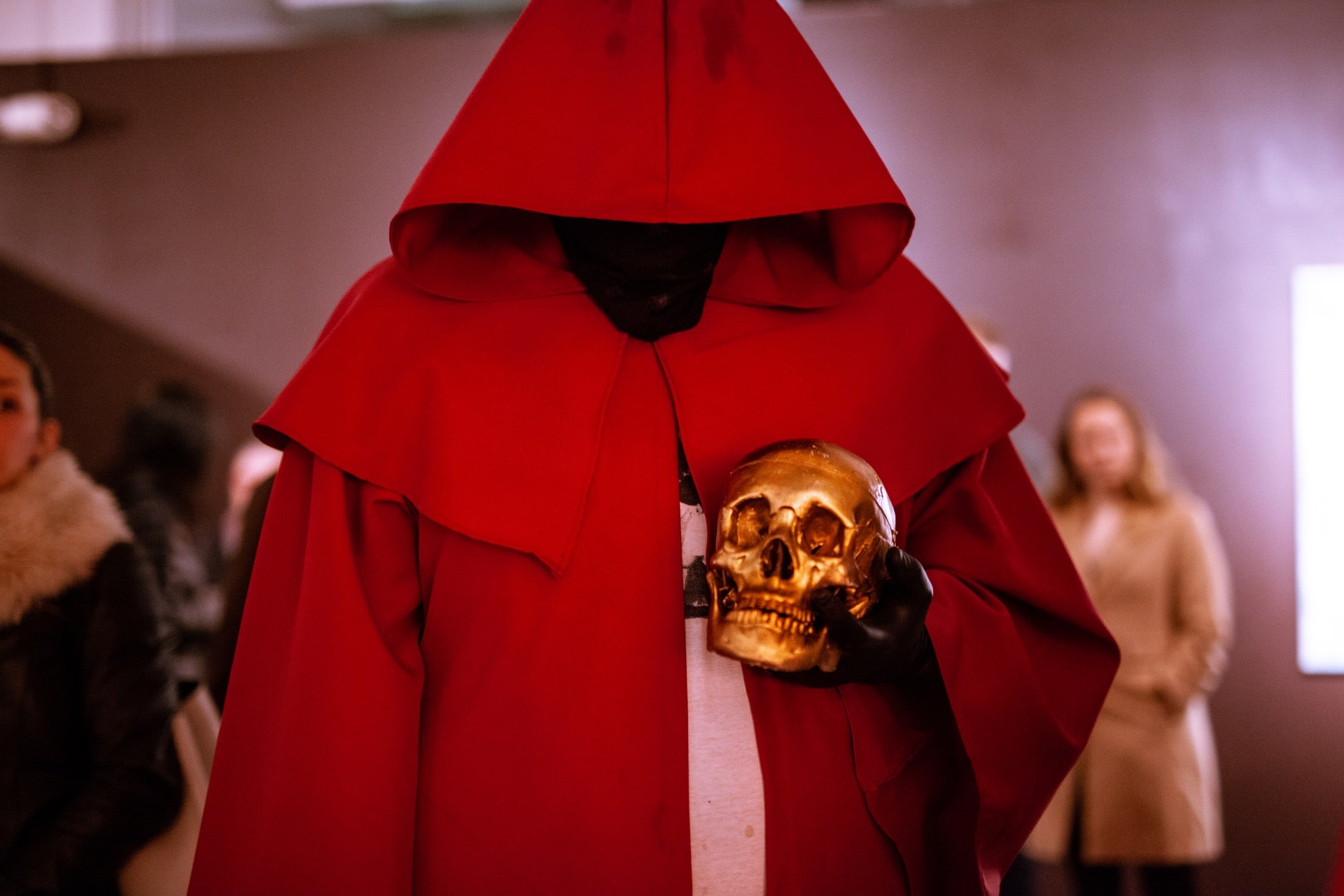
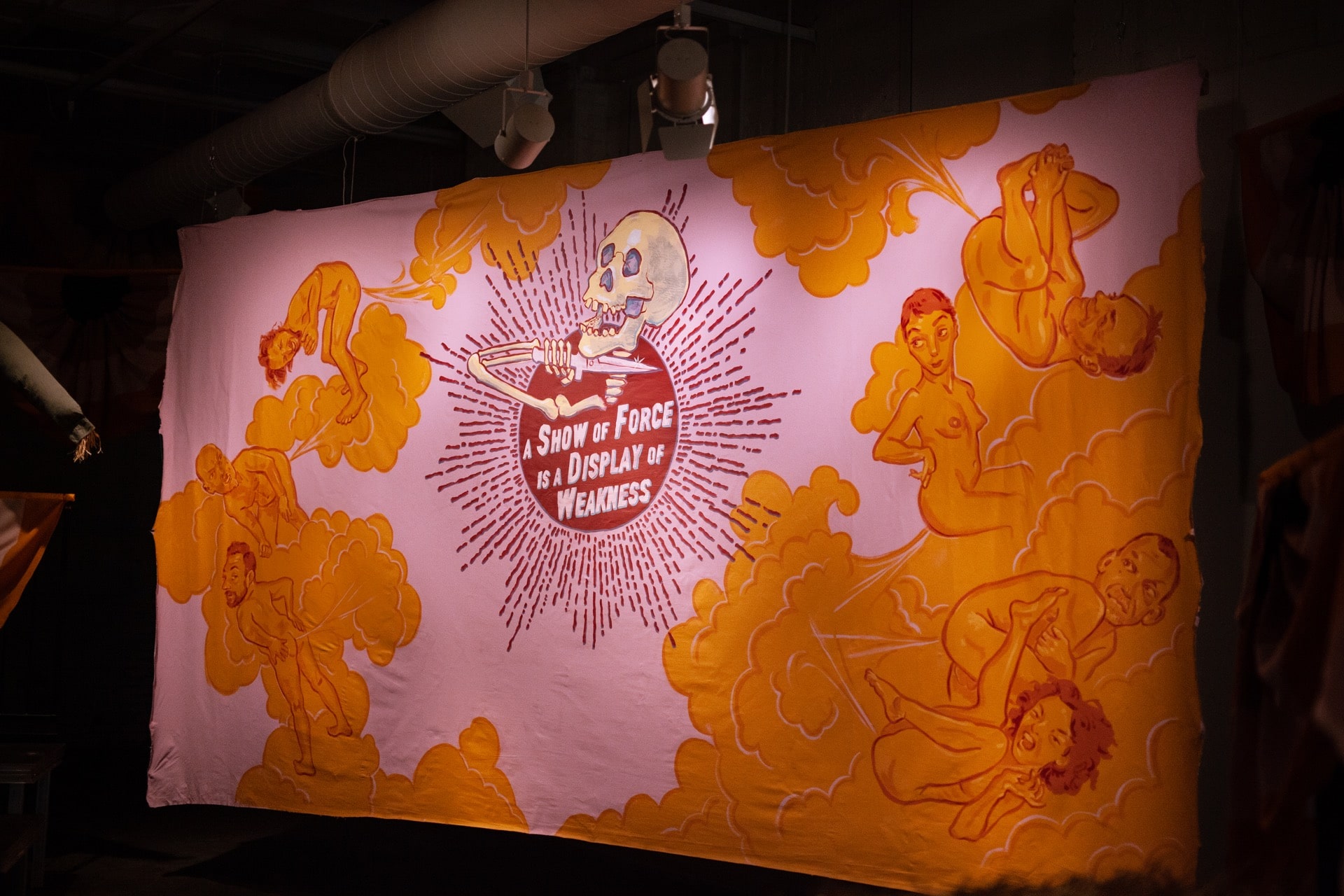
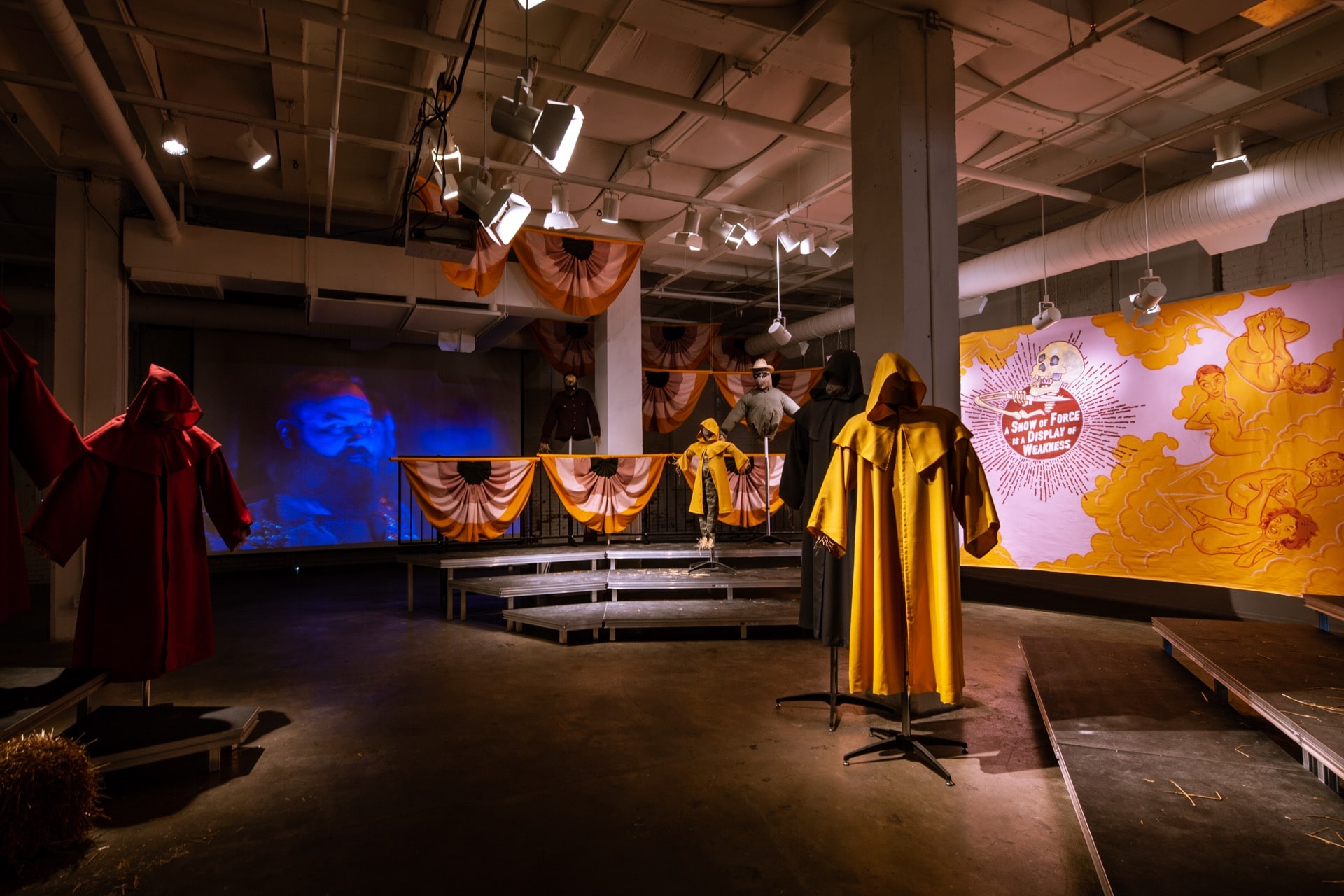
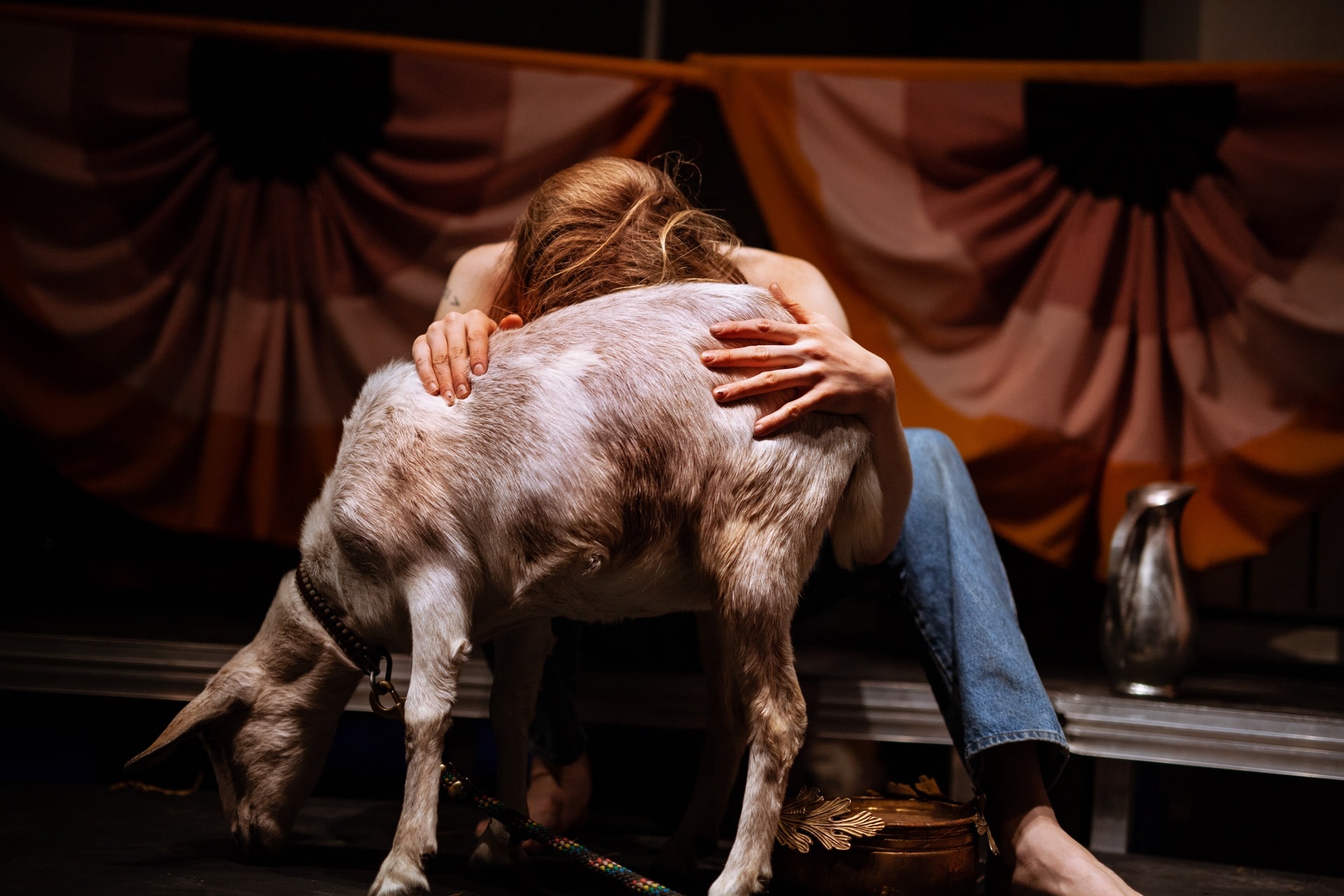
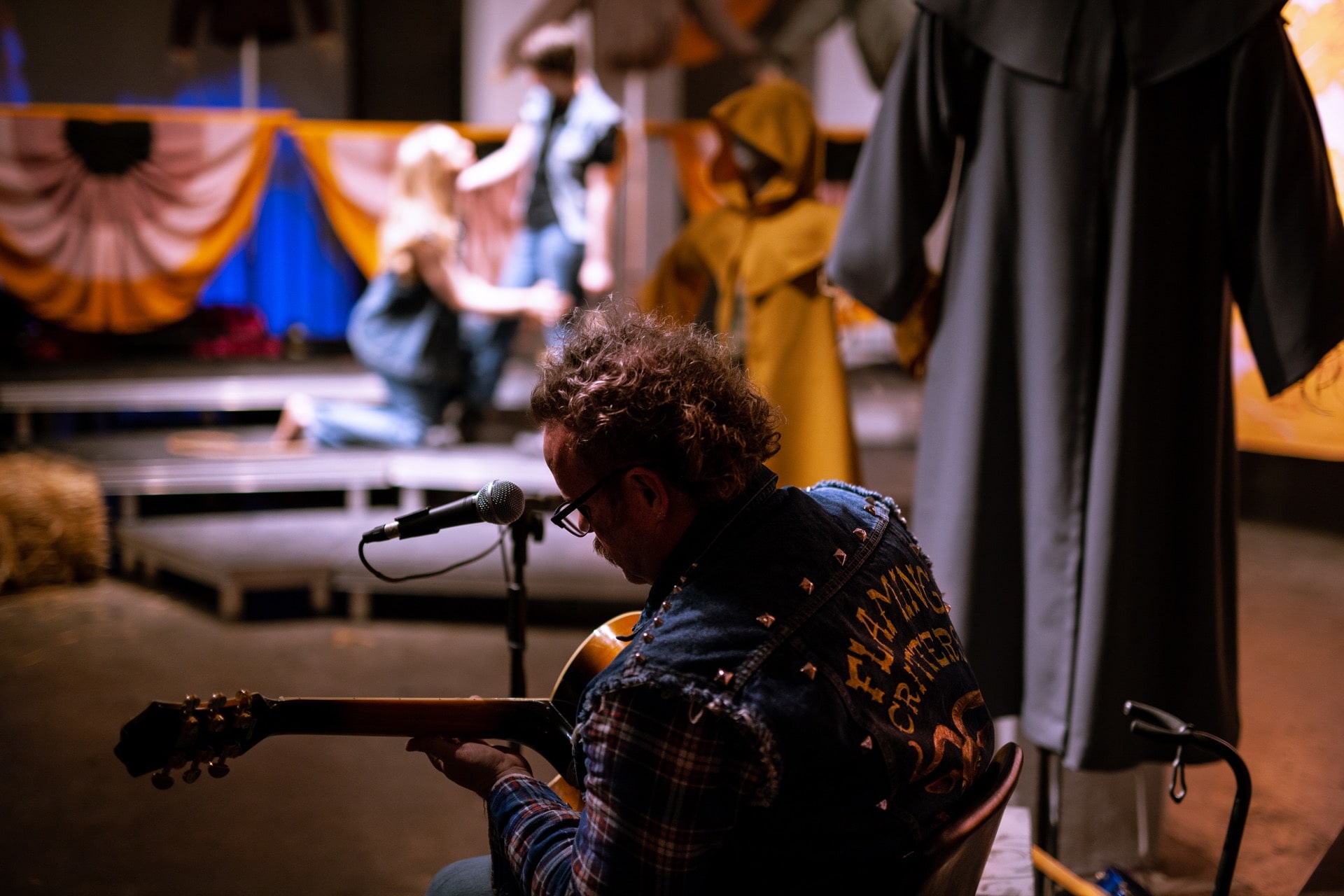
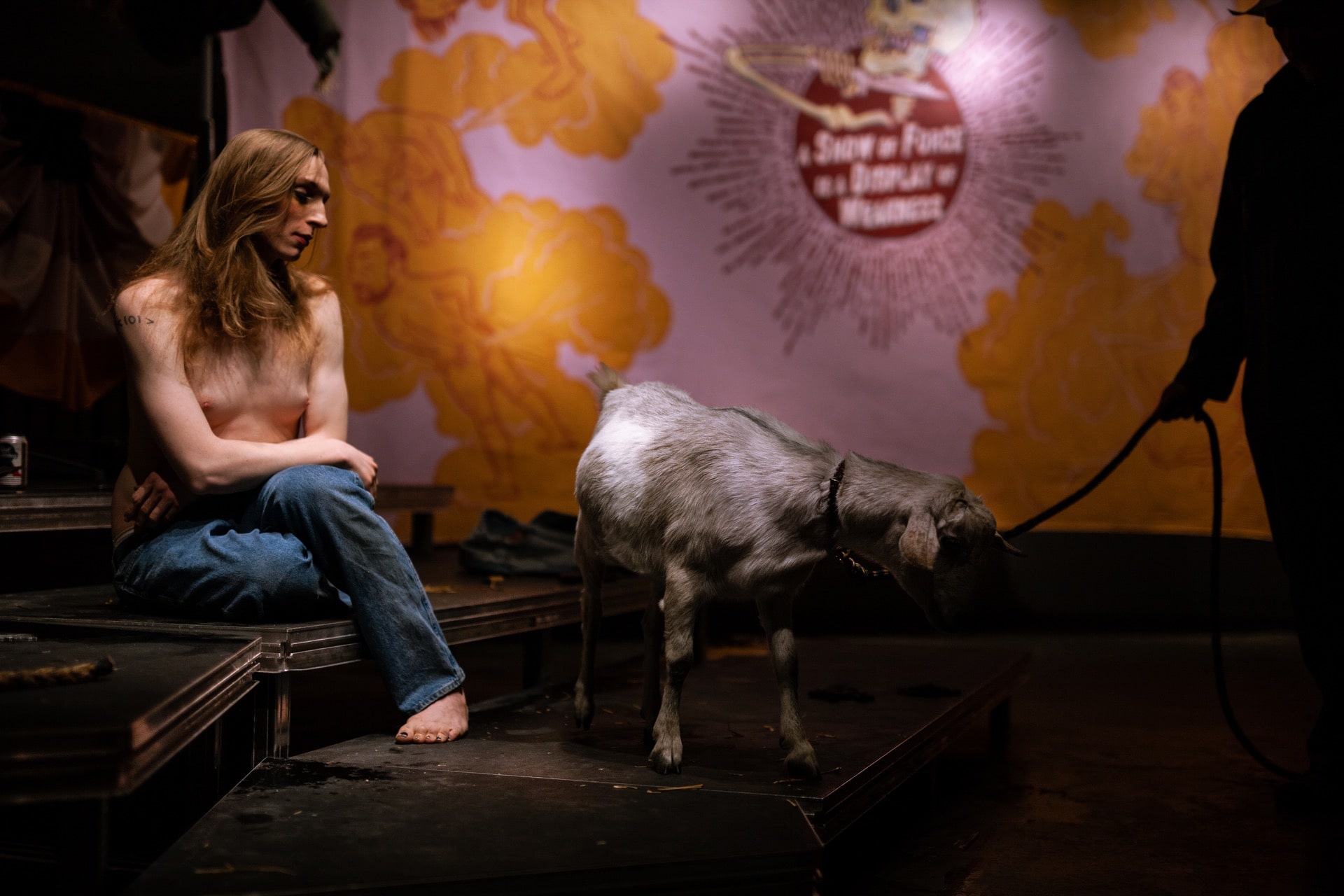
Horror and the Propagation of Trauma
Heyd Fontenot at Living Arts
Inspecting a wall of “flash” during a half-day’s session at a tattoo parlor, I saw the standard sketches of demons, skulls, weapons, venomous animals and grim reapers. I was compelled to ask the tattooist: “Why do people get scary tattoos?” His answer was simple and profound: “…because they’re scared.” I might consider this man an expert witness to my query, not simply on tattoos but because he’d seen more than his share of scary things. I happened to know that he’d been to prison and that he’d killed someone in a fight. He’d made drastic life changes since that unfortunate period: martial arts, mediation and getting sober. He’d made peace with a traumatic past – he was centered and calm and he’d learned important lessons and survived. Undoubtedly that’s why his answer seemed so effortless and from my perspective had hit a bull’s eye.
Trauma and pain might continually seek out more trauma and pain, unless one devoted time and energy to processing those wounding experiences. It is possible to evolve these tragedies, or at least the way we perceive them. On the other hand, if trauma is ignored it has no chance at resolving itself or releasing any pressure, and it certainly has staying power. Much like cancer, it has tremendous potential for growth and destruction.
During my American/Catholic upbringing in the 1970’s and 80’s, I was frightened into submission with anti-drug propaganda and terrified by supernatural lore into “behaving” . I had a mother, a father, teachers, priests and a wealth of misinformation. The things I was taught to fear most would not be the things that would pose the greatest threats. So it has been my experience that in rebelling from what was presented as wisdom, I have vanquished many of the demons that were created with the sole purpose of guarding me against my own hypothetical destruction. And though I have found great liberation, pale versions of these demons haunt me. One of the problems we may always face is that while God has given us free-will, institutions often strive to disallow it.
In many ways, I am here to provoke, frighten and disturb. But also I expect my artwork to comfort, nurture and unburden. I see injustices; I see horrors swept under the rug. So my job as an artist is to shine some light on that horror, so that we might see these monsters for what they are. I’m not making provocative images purely for the sake of disturbing anyone. (Okay, if I’m being honest, Mike Pence is something of a muse and perhaps my fantasy audience.) Since I interact with my work as both creator and spectator, I am able to discover meaning with the work in both roles and in all stages. In order to be fully immersed in this process of digesting discomfort and manifesting these visions, it’s necessary that I employ empathy for individuals and institutions with which I may be in conflict. People that I find most frightening: fascists and traditionalists, literalists and bigots. In short, these are actually just other frightened people.
